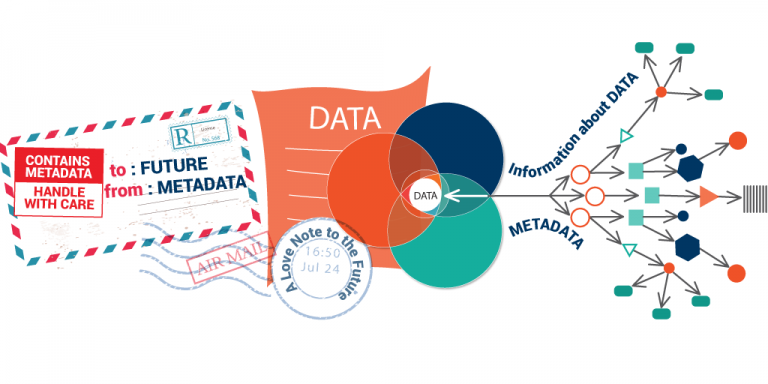Salesforce Custom Metadata Settings Part 2
Contents
[NOTE] Updated 5 years ago. This article may have outdated content or subject matter.
Prologue
This is the second post in the series Custom Metadata Settings on the Salesforce platform. Please checkout Salesforce Custom Metadata Settings Part 1 before continuing with this article, all the basics are discussed there in detail. The following topics will be discussed in this article with the related code:
- Custom Settings Methods (code)
- Custom Metadata Type SOQL queries
- Custom Metadata Packaging
- Custom Metadata Visibility
Custom List Settings Methods
Three main methods exist in getting Custom List Settings data namely:
CustomSettingName__c.getAll(), returns a map for all the custom setting entries. The key is Custom Setting name and value is the Custom Setting NameCustomSettingName__c.getInstance('Custom Setting Name'), returns Custom Setting data set specifiedCustomSettingName__c.getValues('Custom Setting Name'), returns Custom Setting data set specified
Custom List Settings Methods Examples
Assume that a Custom List Setting Called Country was created with a Text field named PostalCode. The following records were inserted:
- Name = Jamaica, PostalCode = JMC43244
- Name = Canada, PostalCode = A1A 1A1
- Name = Argentina, PostalCode = 1865
Country__c.getAll()
| |
Country__c.getValues('name')
| |
Country__c.getInstance('name')
| |
Custom Hierarchy Settings Methods
CustomSettingName__c.getInstance(), Returns a custom setting data set record for the logged in userCustomSettingName__c.getInstance('USER_ID'), Returns a custom setting data set record for supplied user idCustomSettingName__c.getValues('USER_ID'), Returns a custom setting data set record for a specific supplied user id, and doesn’t merge values from other levels of the hierarchy. Instead, getValues returns null for any fields that aren’t set.CustomSettingName__c.getInstance('PROFILE_ID'), Returns a custom setting data set record for supplied profile idCustomSettingName__c.getValues('PROFILE_ID'), Returns a custom setting data set record for a specific supplied profile id, and doesn’t merge values from other levels of the hierarchy. Instead, getValues returns null for any fields that aren’t set.CustomSettingName__c.getORGDefaults(), Returns a custom setting data set for the organization
Note: If you create a Custom Hierarchy Setting with three fields A (User), B and C with profiles. The main difference between
CustomSettingName__c.getInstance('userId|profileId')andCustomSettingName__c.getValues('userId|profileId')is thatgetvalues()nullifies any merged field not associated with the ID supplied. For example, let’s say your retrieving field A with an active user id, the return record if existing would contain field A populated, but the others set toNull. This, however, is not the case for thegetInstance()it retrieves merged fields and populates them accordingly.
Custom Hierarchy Settings Methods Examples
Assume that a Custom Hierarchy Setting Called ChatAgent was created with a Text field named Region. The following records were inserted:
- Name = Samuel, Region = West, Profile = Support Agent, User = None
- Name = Dean, Region = East, Profile = Backup Agent, User = None
- Name = Felecia, Region = North, Profile = Technical Agent, User = None
- Name = Felecia, Region = South, Profile = None, User = Ramiel
CustomSettingName__c.getInstance(‘USER_ID’)
| |
CustomSettingName__c.getInstance(‘PROFILE_ID’)
| |
Custom Metadata Type Visibility
With custom metadata types and records, you can determine who can access and change the types and records you created. When you create a type, you can choose whether the type is public or protected. All Apex code in an org can use public types. Only code within the package can use protected types.
Field Manageability
When it comes to protecting fields on custom metadata types, you have three options:
- The package developers can use package upgrades to edit the field after release. Subscriber orgs cannot change the field for upgrades
- Subscriber org can edit the fields after installing the package. Subsequent package upgrades don’t override the subscriber’s changes
- Neither the package developer nor the subscriber can edit the field after the package is released. You can only use package upgrades after release to edit fields.
Note: You can also protect custom metadata types, providing the same access protection as protected records. If you change a type from protected to public, its protected records remain protected, and all other subsequent records become public. If you use Setup to create a record on a protected type, Protected Component is selected by default.
Note: When a type is public, you can’t convert it to protected. The subscriber can’t create records of a protected type
What is a Namespace?
Namespaces are prefixes that are used in managed AppExchange packages to differentiate custom object and field names from those in use by other organizations.
Namespace Records
The statements are tied to managed packages and not unmanaged packages.
- Code that is in the same namespace as custom metadata records can read the records
- Code that is in the same namespace as custom metadata types can read the records for that type
- Code thats is in a namespace that does not contain the type or protected record cannot read the protected records
Package Custom Metadata Types & Deploy
Managed packages, unmanaged packages, and managed package extensions are all compatible with custom metadata types. And change sets let you deploy your types and records from a sandbox. Adding custom metadata records to a package follows the same process as adding custom metadata types to a package.
Note: To create a managed package, your org must be namespaced.
Custom Metadata Type SOQL queries
Querying Custom Metadata Types follow the same syntax used when using SOQL for Custom objects on the platform. However, there are a few limitations you must be aware of, such limitations were discussed in Salesforce Custom Metadata Settings Part 1.
Epilogue
The moral of this article was to broaden your understanding of Custom Settings and Custom Metadata Types in Salesforce, supplementing it further with a few code snippets to cement the concepts even more. Thanks for stopping by and i hope you were able to learn or reinforce your knowledge for Metadata in Salesforce 😃
Author Remario Richards
Modified March 13, 2020

